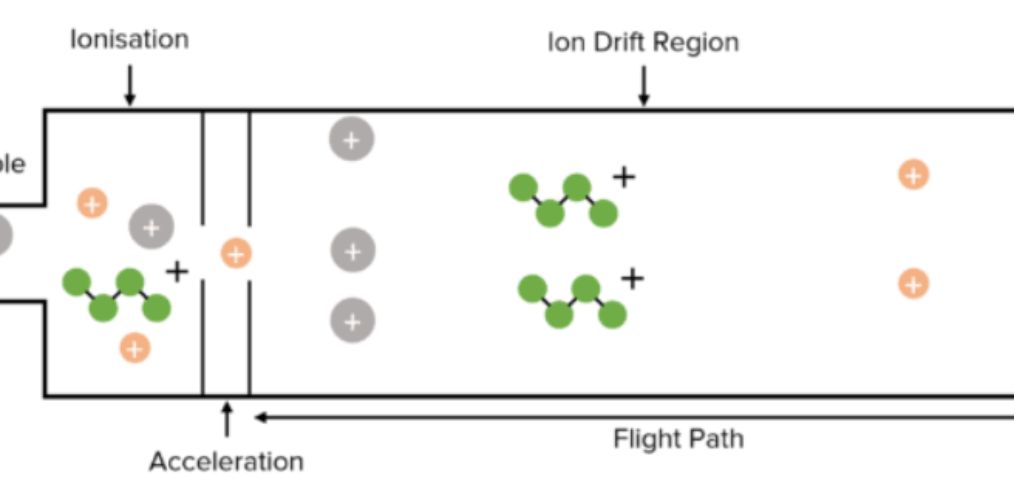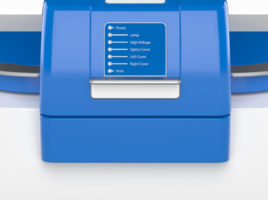
Types of mass analysers – Time of flight (ToF)
15 min read.
Basic principle:
Time of flight mass analysers use an electric field to accelerate ions along a field-free drift path of known length, and then measures the time each ion takes to reach the detector. This is shown in the diagram below. Time of flight (ToF) is dependent on the mass to charge ratio (m/z), therefore, ions of equal kinetic energy but different masses move at different velocities.
Simple diagram of ToF mass analysers. Image taken from: https://mmerevise.co.uk/a-level-chemistry-revision/time-of-flight-mass-spectrometry/
Different ToF mass analysers:
Ionisation is typically by either laser desorption/ionisation (LDI) or matrix-assisted laser desorption/ionisation (MALDI). Different ToF instruments differ in their reflector design.
Linear ToF
The instrument is set up to allow for the uninterrupted travel of ions from the ion source to the detector.
A benefit of this set up is that metastable decompositions (i.e., fragmentation of ions during flight, which in most cases reduces the detection signal) does not reduce the intensity of a molecular ion signal. This is because fragment ions conserve the velocity of their intact precursors, therefore, they are detected simultaneously. Additionally, both ionic and neutral fragments are detected by the linear ToF analyser.
Reflector ToF
The instrument contains reflectors which create a non-linear ion travel path from the ion source to the detector, whereby the kinetic energies of the ions remain unaffected.
A benefit of this set up is that the elongated flight path has significantly improved mass resolving power (i.e., the ability to distinguish two peaks of slightly different mass-to-charge ratios), however, this also allows for more time for metastable decomposition. Metastable decomposition in reflector ToF analysers reduces the detection of the molecular ion, because in this set up, the reflector will change the flight path depending on the fragment size, therefore, fragment ions and their intact precursors will not arrive at the detector at the same time.
Orthogonal-acceleration ToF
Ionisation is typically by electrospray ionisation, whereby, ions are extracted orthogonally from a continuous ion beam. This ToF analyser can be of linear or reflector type.
Orthogonal-acceleration ToF instruments are the most used mass analyser, due to its high sensitivity, accuracy, and mass-resolving power. Additionally, it has a compact design.
Further resources:
- Detailed description of orthogonal-acceleration ToF: https://www.agilent.com/cs/library/technicaloverviews/Public/5990-9207EN.pdf
- Novel mass spectrometry system which incorporates a ToF mass analyser with a quadrupole mass analyser: https://www.ncbi.nlm.nih.gov/pmc/articles/PMC9896552/



